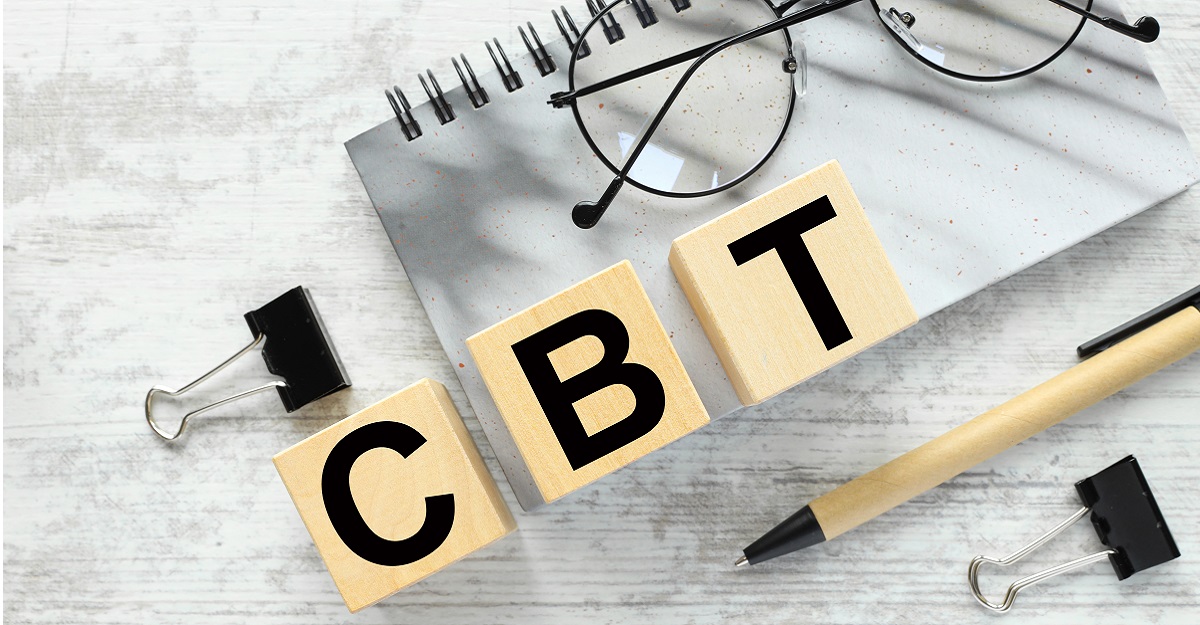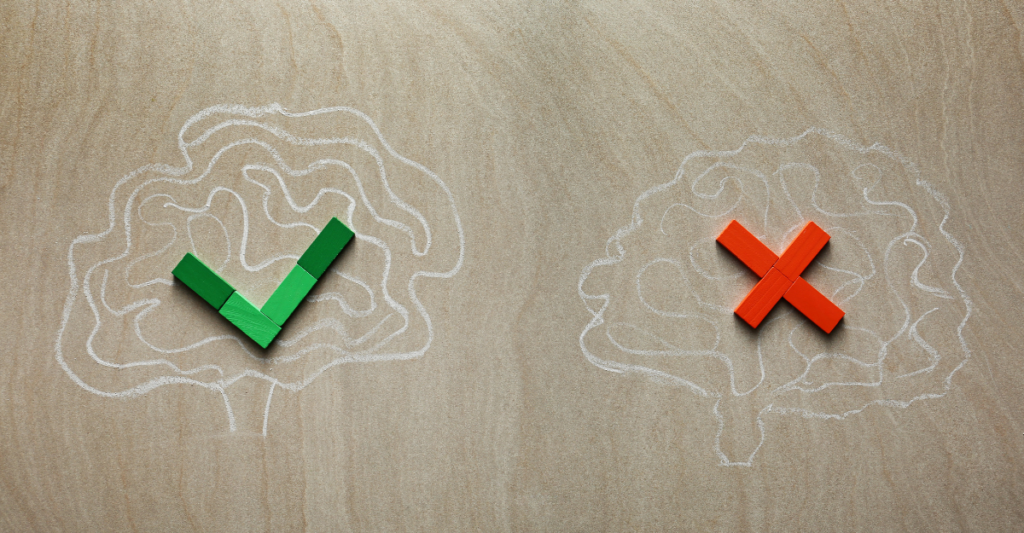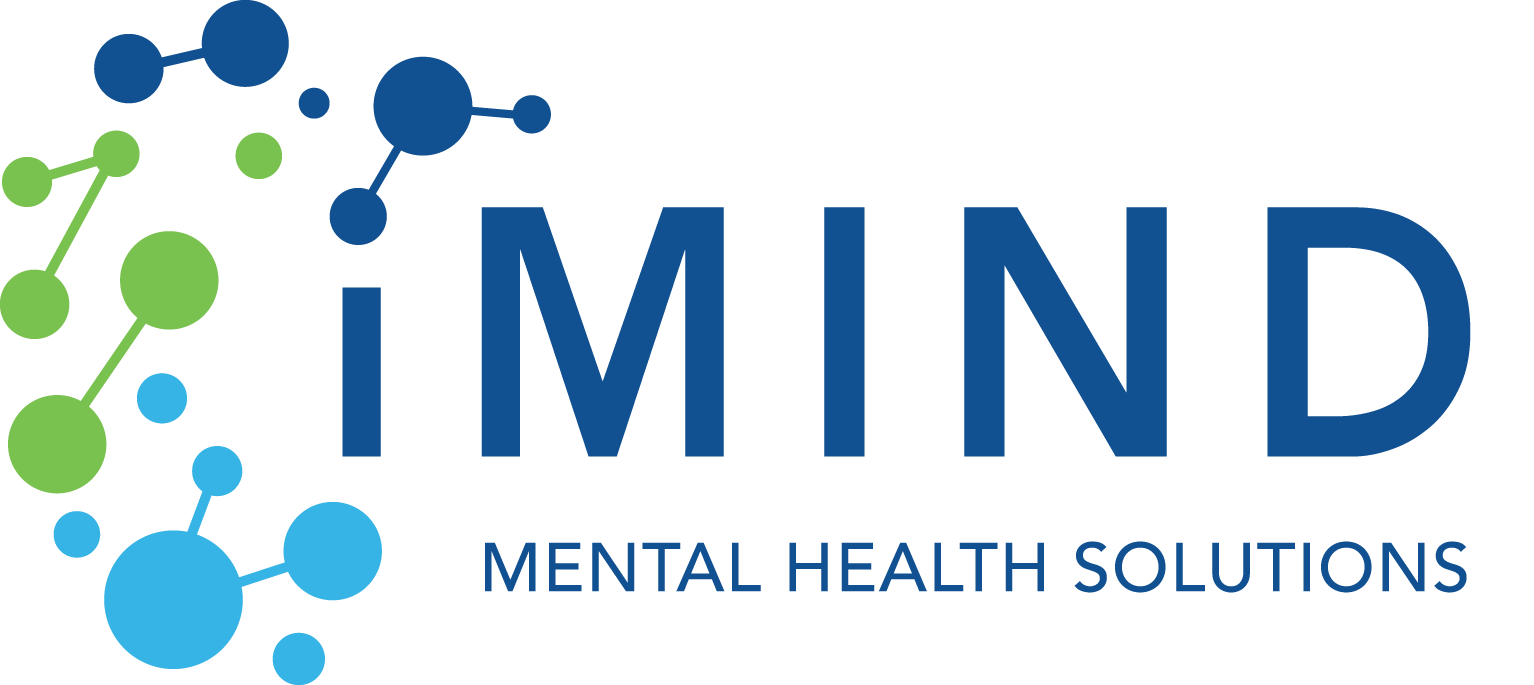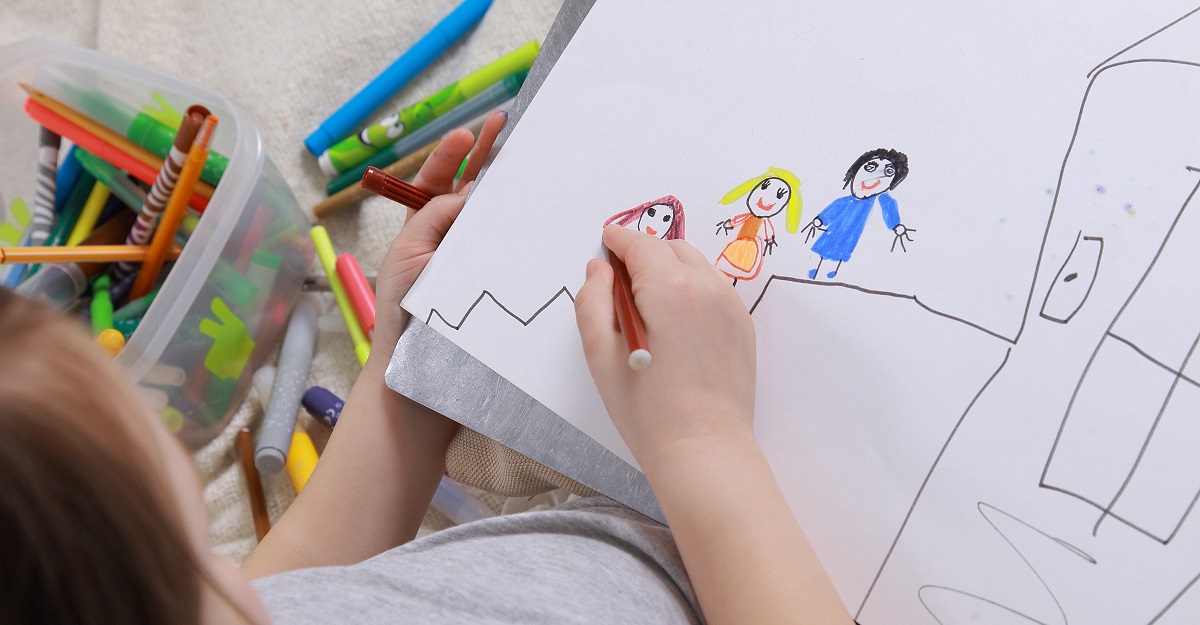Cognitive Behavioral Therapy: Does it Work?
iMind Mental Health Solutions Resource

Much like a software developer debugs code, cognitive behavioral therapy works to debug your harmful thoughts and behaviors—but does it work? The answer is yes, and for a variety of mental troubles.
What is Cognitive Behavioral Therapy?
Cognitive behavioral therapy, also known as CBT, is a form of conversational therapy designed to help people recognize their negative thought patterns and give them practical skills to challenge and change these thoughts. Essentially, it is a toolkit for your mind. It teaches you to identify situations where your thoughts might not be entirely accurate or helpful and shows you how to replace them with more positive, constructive ways of thinking.
The “cognitive” part of cognitive behavioral therapy focuses on your thoughts and beliefs. The therapy helps you recognize where you may be stuck in loops of negative thinking that can make you feel anxious, depressed, or overwhelmed.
The “behavioral” part zeroes in on the actions that come from those thoughts. By understanding the connection between what you think and how you act, you can start to make healthier choices in response to life’s challenges.
Cognitive behavioral therapy encompasses many different techniques and modalities, all sharing a focus on thoughts and behaviors. Therapists choose the best techniques to treat the specific mental conditions of their clients. For example, those with anxiety may be treated with exposure therapy, where clients gradually face their fears in real life to reduce that fear.
The Goals of Cognitive Behavioral Therapy
“How did I beat severe anxiety and depression? How did I lose seventy pounds? How did I take my destiny into my own hands and save my life?
Of course the answer is complicated, but the first step is not. Cognitive Behavioral Therapy (CBT) is a fairly simple process that transformed the way that I think.
Over the course of six months, I learned how to eliminate poisonous, debilitating thoughts from my mind. I ended a lifetime of crushing fear and began a new life of freedom, peace, and joy.”
–Dena, How Cognitive Behavioral Therapy Saved My Life, Live Love Simple
Cognitive behavioral therapy is generally short-term and goal-oriented, meaning that you and your therapist will set specific objectives to work on. You might use worksheets, exercises, and homework assignments to practice your new skills outside of therapy sessions.
The goal is to give you a new perspective on difficulties you face and equip you with the tools to tackle them head-on, even after your therapy ends.
By breaking down complex emotions and reactions into manageable components, cognitive behavioral therapy provides a structured approach to solving problems in a practical, straightforward manner. This makes it easier to see how thoughts, feelings, and actions are connected, and how tweaking one can impact the others.
Because it is goal-oriented and time-limited, many people find cognitive behavioral therapy to be a practical option that fits into their lives, without requiring years of therapy.
When it comes to addiction, CBT provides valuable tools for both recovery and relapse prevention. It teaches coping strategies that can help people handle stress or triggers, without turning to substances. It is often used alongside other treatments – such as medication or support from loved ones – for a comprehensive approach to recovery.
How Does Cognitive Behavioral Therapy Work?
“The whole process did involve questioning everything. Everything was ‘why do you think that is going to happen?’ or ‘what is it that makes you think that?’ To start with, I got a bit pissed off. Someone constantly questioning your reasoning and just sitting there thinking ‘because I said so that’s why!’
As I mentioned before, this changed as I became more and more open-minded. I cooperated (that is a key word right there) and started thinking ‘why DO I think that?’ and ‘why DOES this happen this way?’ It took a lot of time, like anything else, but talking, listening, and questioning my own thoughts lead from one thing to another, and I was discharged from the Mental Health Services a year and a half later.
Going back to the main keyword: cooperation. This was the whole reason cognitive behavioural therapy worked for me. I stopped being ignorant, and, instead of accepting this was the way things were, I opened my mind, listened to other people who were trying to help me, and stepped very far out of my comfort zone. It did take hard work and dedication to completely change my ways of thinking, as well as it taking a big push from those around me. Mainly, though, it took myself to stop accepting these negative thoughts and tweak the way I thought about life and everyone/everything around me, because life is precious, and I needed a kick up the arse to realize this.”
–Lili Chapman, How Cognitive Behavioural Therapy Saved My Life, Medium
The main pillars of cognitive behavioral therapy are cognitive restructuring, behavioral activation, and skill training.

Cognitive Restructuring
This is essentially a fancy term for changing the way you think. Imagine your mind is like a camera lens through which you see the world. If the lens has a smudge, everything looks a bit distorted. Cognitive restructuring helps you clean that smudged lens. It teaches you to identify thoughts that are exaggerated, negative, or just plain inaccurate, and then “restructure” or replace them with more balanced and realistic thoughts.

Behavioral Activation
Behavior influences how you feel just as much as your thoughts do. Behavioral activation is about identifying actions that make you feel good and encouraging you to do more of them, while also recognizing the behaviors that drag you down.
For instance, if you’re feeling depressed, the idea of going for a jog might seem daunting, but CBT would guide you to take small steps toward that behavior, like just putting on your running shoes. The goal is to help you engage more in activities that boost your mood and wellbeing.

Skills Training
CBT isn’t just about understanding yourself; it’s also about giving you practical skills to handle life’s challenges. This could range from teaching you relaxation techniques to help with anxiety to providing you with communication skills that could improve your relationships. Skills training is the part where you get the tools to better manage your emotional and behavioral responses.
What does a CBT session look like?
Each cognitive behavioral therapy session provides you with a safe space to explore your thoughts and behaviors, guided by techniques that have been proven to help people change for the better. It’s like a workout for your mental muscles, with the ultimate goal of making you more resilient and capable in handling life’s challenges.
A typical CBT session is similar to a guided conversation with a roadmap. Let’s break down how it is often structured:

Check-In and Catch-Up
You’ll start by catching up with your therapist about how your week went. This isn’t just small talk; it helps set the stage for what you’ll focus on during the session. It’s like doing a quick inventory to see what needs attention.

Review of Last Session and Homework
Remember those ‘homework assignments’ mentioned earlier? Now is the time to discuss them. Maybe you were asked to track your mood or try a new way of responding to a common trigger. Discussing how it went can provide valuable insights and help your therapist tailor the session to better suit your needs.

Main Discussion
This is the heart of the session, where you dive into specific issues. Whether you’re tackling a long-term problem or something that popped up recently, this is where you’ll use cognitive behavioral therapy techniques to break it down and understand it better. Your therapist will lead you in exercises or thought experiments designed to help you gain a new perspective.

Skill Building
Depending on what you are working on, you might practice new skills or strategies in the session itself. This could be anything from a breathing exercise to a new way of approaching a problem.

Summary and Homework for Next Time
Before the session ends, you’ll usually summarize what you’ve learned and talk about how to apply it in real life. You’ll also get your next homework assignment so that you can keep practicing your new skills.

Wrap-Up
Finally, you’ll confirm the date and time of your next appointment and say your goodbyes until then.
What Can CBT Treat?
Cognitive behavioral therapy treats a wide range of mental health disorders.
Anxiety Disorders
Cognitive behavioral therapy plays a significant role in treating various anxiety-related conditions like generalized anxiety disorder, social anxiety, and phobias. Let’s break down how CBT is typically applied to each of these.
Generalized Anxiety Disorder (GAD)
Social Anxiety
People with GAD often have a hard time relaxing because they are constantly worried about many areas of life—even if there’s no good reason for it. CBT helps by teaching ways to identify and challenge these worrying thoughts. It is much like learning to sort through a cluttered closet, keeping what is useful and getting rid of what is not. Techniques might include learning how to pause and question your worry, or finding alternative ways to look at a situation that causes anxiety.
People with social anxiety are not just shy. They experience real fear around social situations. This is mainly a fear of ending up judged or embarrassed, but it can involve other social fears as well. CBT can help in understanding the thought patterns that fuel this fear. It provides a playbook that shows you what moves you’re making that result in a loss, so you can change your strategy for a win. You’ll often practice these new strategies in safe, controlled environments—either mentally, through visualization, or in the physically, by, for example, going to social settings with your therapist’s support.
Phobias
Phobias involve overwhelming, unreasonable fears of particular objects or scenarios, such as being afraid of dogs, or scared to drive. With CBT, you’re slowly and carefully introduced to what scares you, but in a way that’s managed and safe. You’ll learn ways to cope with your fears, and these coping mechanisms will help reduce your fear when you encounter the object of your phobia in real life.
Mood Disorders
Cognitive behavioral therapy is a valuable tool in managing mood disorders. You will learn and practice coping skills for managing your symptoms. Depression and bipolar disorder are good examples.
Depression
Depression often involves feeling really down, lacking energy, and having little interest in things you once enjoyed. It’s more than just a bad day; it’s like carrying a heavy backpack of emotional weight everywhere you go. CBT can lighten that load, by helping you spot patterns of negative thinking that feed depression. Think of it as pulling the weeds from your garden.
Another CBT strategy for depression is behavioral activation, which is a fancy way of saying that you’ll work on getting back into activities that bring you joy, but that depression has taken away from you.
Bipolar Disorder
Bipolar disorder involves intense emotional shifts, from severe lows (depression) to extreme highs (mania or hypomania). During the high phases, you might feel invincible, but it can lead to risky behavior. In low phases, you might feel the same heavy emotional weight as someone with depression. Cognitive behavioral therapy can offer a stabilizing handrail on this rollercoaster.
For instance, during manic phases, CBT techniques can help you become aware of thoughts that make you feel invincible, so you can counteract them before you do something risky. It’s like having a speedometer for your emotions, helping you know when you’re going too fast.
During depressive phases, cognitive behavioral therapy employs similar strategies as it does for depression alone, like identifying negative thought patterns and working to change them.
Addiction Recovery
Within addiction recovery, CBT is applied with a particular focus on preventing relapse and teaching coping strategies.
Relapse Prevention
When it comes to overcoming addiction, one of the biggest hurdles is avoiding a relapse. It’s easy to fall back into old habits, especially when life throws curveballs your way. CBT assists you in recognizing the cues or triggers that make you feel like returning to your old ways.
Think of it like having a weather radar for your emotions – it helps you see the storm clouds of relapse before they arrive. With your triggers in the spotlight, CBT equips you with better strategies for handling them. For example, if stress makes you want to use, CBT can offer healthier ways to handle stress, like exercise or talking things out.
Coping Strategies
Managing addiction is not just about saying no to what you’re addicted to; it’s also about saying yes to healthier behaviors. CBT provides a toolbox of coping strategies for this. One common tool is ‘cognitive restructuring,’ which is about changing the way you look at your addiction. For instance, instead of thinking “I need this to feel okay,” you can learn to think, “I’m stronger than my cravings.”
Another tool is ‘behavioral activation,’ which helps you find and engage in activities that are rewarding but don’t involve substance use. It’s like redirecting a river; you’re taking the flow of your desires and steering it towards something better.
There are CBT treatment protocols specific to certain disorders. There are differences in techniques, but they all have the “same core model and the general approach to treatment.”
But Does It Actually Work?
Cognitive behavioral therapy is often considered the “gold standard” in psychological treatments. This means it is one of the best options out there based on what we currently know.
- CBT is the therapy that researchers have studied the most: Because of this, we have data showing it can be effective for a wide range of issues, from anxiety and depression to more complex conditions.
- No other therapy has been consistently shown to be better than CBT: When different types of therapy are compared, CBT often comes out on top or very close to it.
- CBT involves up-to-date theories: Lastly, the ideas behind CBT are modern and backed by current thinking about how the human mind works. For example, it’s in line with what we know about how we process information, which makes it compatible with our best understanding of human psychology.
In a review of 269 studies conducted since 2000, the evidence in general for CBT was “very strong,” especially for anxiety disorders, mental disorders that cause physical symptoms (somatoform disorders), bulimia, anger issues, and stress.
A 2022 study on the treatment of anxiety disorders in children found that CBT, used alone, had a success rate of nearly 60 percent. When combined with the selective serotonin reuptake inhibitor medication sertraline, the success rate was 81 percent at 12 weeks.
While it may not be the perfect fit for everyone, its proven track record and practical approach make CBT a worthwhile consideration for many. It doesn’t just offer a quick fix; it gives you lifelong tools to manage your thoughts, face your fears, and build resilience.
How CBT Changes the Brain
CBT alters brain function and connectivity for better mental health for a variety of mental health conditions:
- Depression: With CBT for depression, activity for the media prefrontal cortex area, along with the ventral anterior cingulate cortex, was diminished for negative stimuli and was boosted for positive stimuli.
- Anxiety: CBT deactivates the amygdala and quiets the limbic region, helping improve the symptoms of anxiety. Its calming effect on the insula also decreases anxiety (as well as depression) symptoms.
- Phobias: Cognitive behavioral therapy can calm the insula, stria terminals, anterior cingulate cortex, and (again) the amygdala so that they do not overreact to certain stimuli, lessening the symptoms of specific phobias.
- Obsessive compulsive disorder (OCD): CBT reduces hyperactivity in the anterior cingulate gyrus, the orbital frontal cortex, and the basal ganglia, leading to a reduction of OCD symptoms.
- Post-traumatic stress disorder (PTSD): The left medial temporal gyrus (associated with empathy) and the posterior cingulate gyrus (associated with forgiveness) were more active after CBT treatment for PTSD, leading to PTSD symptom improvement.
- Insomnia: Patients experienced improvement after CBT treatment for insomnia, reflecting decreased activity in the prefrontal cortex and posterior cingulate cortex.
Although each condition has different effects, mental health disorders can share common dysfunction and deficits in thinking, emotions and behavior, which can affect all aspects of life.
Cognitive Behavioral Therapy Can Be a Game-Changer
“My insecurity, anxiety, anger and excessive need to be appreciated all contributed to the failure of my first two marriages. I was diagnosed with depression at around 45, after my second divorce. I sought help from a clinical psychologist, who told me I had described 75 percent of the most common symptoms of depression in the first five minutes of talking to him. He agreed to let his colleague deliver one-to-one CBT sessions with me.
It was like having the scales drop from my eyes as I engaged with the therapy by reading about living with depression. CBT helped me identify my negative thoughts, and guided me through the choices I’d make in response. It was possible to understand why I was like I was and that I could do something about it.”
–Peter C. in an interview with The Guardian
If you’ve been grappling with emotional or mental challenges, and you’re on the fence about what to do next, CBT might just be the step forward you’ve been waiting for. It’s an opportunity to gain self-awareness, learn new coping strategies, and ultimately become the captain of your own ship in the stormy seas of life. Even if you discover it’s not for you, the skills and insights you’ll gain along the way are invaluable.
Remember, asking for help is a sign of strength, not weakness. You’re never alone on this journey, and cognitive behavioral therapy could be the helping hand you need to make your mental health a priority.
- Cognitive Behavioral Therapy Saved My Life – Live Love Simple. (n.d.). LiveLoveSimple.com
- Hofmann, S. G., Asnaani, A., Vonk, I. J. J., Sawyer, A. T., & Fang, A. (2012). The Efficacy of Cognitive Behavioral Therapy: a Review of Meta-Analyses. Cognitive Therapy and Research, 36(5), 427–440.
- Pegg, S., Hill, K., Argiros, A., Olatunji, B. O., & Kujawa, A. (2022). Cognitive Behavioral Therapy for Anxiety Disorders in Youth: Efficacy, Moderators, and New Advances in Predicting Outcomes. Current Psychiatry Reports, 24(12).
- Porto, P. R., Oliveira, L., Mari, J., Volchan, E., Figueira, I., & Ventura, P. (2009). Does Cognitive Behavioral Therapy Change the Brain? A Systematic Review of Neuroimaging in Anxiety Disorders. The Journal of Neuropsychiatry and Clinical Neurosciences, 21(2), 114–125.
- Yoshimura, S., Okamoto, Y., Onoda, K., Matsunaga, M., Okada, G., Kunisato, Y., Yoshino, A., Ueda, K., Suzuki, S., & Yamawaki, S. (2013). Cognitive behavioral therapy for depression changes medial prefrontal and ventral anterior cingulate cortex activity associated with self-referential processing. Social Cognitive and Affective Neuroscience, 9(4), 487–493.
- Yuan, S., Wu, H. Yun W., Huazhen X., Jianping Y., Yuan Z., Ning Z., Jinyag L., Qianwen X., Chun W. (2022). Neural Effects of Cognitive Behavioral Therapy in Psychiatric Disorders; A Systemic Review and Activation Likelihood Estimation Meta-Analysis. Frontiers in Psychology.
Latest News
-
Are We Overusing the Term Passive Aggressive?
Sometimes people might label behavior as passive-aggressive when it’s actually just indirect communication or avoidance of confrontation. Overusing the term can dilute its meaning and make it less effective in addressing genuinely passive-aggressive behavior.
-
Top 10 Questions About Art Therapy for Mental Health
Art therapy has recently gained recognition for its unique blend of healing therapy and personal expression. Despite its growing popularity, there seems to be some misunderstanding about what art therapy entails, who it can benefit, and how it differs from other forms of therapy.



